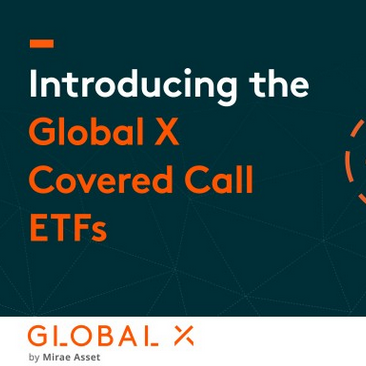
Global X Launch Australia’s First S&P/ASX 200 Covered Call ETF
Global X ETFs (Global X) has launched a trio of covered call funds in Australia aiming to enhance investors’ income potential, including Australia’s first S&P/ASX 200 passive covered call ETF.
In conjunction with the Australian Securities Exchange (ASX), Global X has released the Global X S&P/ASX 200 Covered Call ETF (ASX Code: AYLD) which will track the S&P/ASX BuyWrite Index.
Graham O’Brien, ASX Head of Equity Market Sales and Equity Derivatives says buy-writes are the most popular options strategy amongst Australian investors, combining the flexibility of listed options with share ownership.
“AYLD aims to enhance income potential and reduce portfolio volatility compared with outright share ownership. As the first options strategy ETF listed over an index, investors can access a long back history of performance by reviewing the index history supplied by S&P,” O’Brien says.
Global X has also launched the Global X Nasdaq 100 Covered Call ETF (ASX Code: QYLD), which will track the Cboe Nasdaq-100 BuyWrite V2 Index; and the Global X S&P 500 Covered Call ETF (ASX Code: UYLD), which tracks the Cboe S&P 500 BuyWrite Index. Both funds are already listed in the US and represent the two largest covered call ETFs in the world, measured by assets under management.
A covered call (also called a buy-write) involves selling call options over stocks an investor already owns. Selling a call option generates income in the form of a premium. Investors selling call options are still eligible for dividends and franking credits from their shareholdings. The premiums can be a source of a substantial amount of alternative equity income, depending on market conditions.
Blair Hannon, Head of Investment Strategy at Global X says the three funds can help investors balance portfolio growth and income.
“We consistently hear how important income is to investors across all age groups. We see options strategies, incorporated in ETFs, as a great entry point for investors to supplement existing income sources like dividends or coupons from bonds.”
“Used as a core equity holding, the options premiums of a covered call ETF can smooth the impact of market falls. In this way, it provides investors with potential protection against drawdowns,” Hannon said.
“Alternatively, a satellite portfolio holding can be used to generate an alternative source of income, especially in times of heightened volatility or rising interest rates. This was evident when QYLD and UYLD generated high yields above 12 per cent in the second half of last year.”
Using covered calls is a well-established income generation and downside protection strategy among sophisticated investors.
Hannon says the suite of covered call funds enables more Australian investors to access this type of strategy in a simple and cost-effective form that provides efficient options execution.
“A covered call strategy accessed through an ETF can save investors the time, potential expense and complexity of doing it themselves,” Hannon added.
All three funds invest in their indexes on a fully replicated basis. In the case of AYLD, the fund invests in the S&P/ASX 200 and then sells quarterly exchange traded call options against the index, worth roughly 100% of the value of the portfolio. Options are rolled to the next quarter the day before expiry.
The income generated by selling call options can help portfolios maintain performance during period of falling markets or sideways trading. In addition, call option premiums usually rise during periods of higher interest rates and market volatility. The trade-off is that upside potential may be capped, as the options may be “called” if markets move higher.


